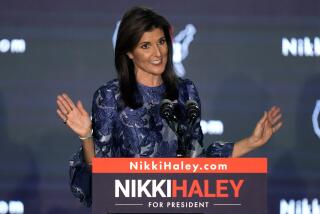Watch an expert teach a smug U.S. senator about Canadian healthcare
- Share via
A U.S. politician’s I-don’t-need-no-stinkin’-facts approach to health policy ran smack into some of those troublesome facts Tuesday at a Senate hearing on single-payer healthcare, as it’s practiced in Canada and several other countries.
The countries in question have successful and popular government-sponsored single-payer systems, provide universal coverage and match or outdo the United States on numerous measures of medical outcomes -- for far less money than the U.S. spends. To explain this, Sen. Bernie Sanders (I-Vt.) asked seven experts to testify before his subcommittee on primary health and aging.
Those interested in how the U.S. matches up should watch the full session, viewable here.
RELATED: What makes a community healthy?
By far the high point of the morning was an exchange between Sen. Richard Burr (R-N.C.) and Danielle Martin, a physician and health policy professor from Toronto. In the exchange, Martin bats down the myths and misunderstandings about the Canadian system that Burr throws at her.
(The reference to “Premier Williams” is to Newfoundland Premier Danny Williams, whose decision to have a heart valve procedure in Miami, near where he owns a condo, rather than Canada, is widely viewed in Canada as a rich man’s failure to investigate the care available to him closer to home.)
Here’s a lightly edited transcript of the key moments, which start with Burr asking Martin about the observation in her written testimony that wait times for elective surgery in single-payer systems will lengthen as doctors move out of the public system:
FULL COVERAGE: Healthcare in the United States
BURR: Why are doctors exiting the public system in Canada?
MARTIN: Thank you for your question, Senator. If I didn’t express myself in a way to make myself understood, I apologize. There are no doctors exiting the public system in Canada, and in fact we see a net influx of physicians from the United States into the Canadian system over the last number of years.
What I did say was that the solution to the wait time challenge that we have in Canada -- we do have a difficult time with waits for elective medical procedures -- does not lie in moving away from our single-payer system toward a multipayer system. And that’s borne out by the experience of Australia. So Australia used to have a single-tier system and did in the 1990s move toward a multiple-payer system where private insurance was permitted. And a very well-known study by Duckett, et al., tracked what took place in terms of wait times in Australia as the multipayer system was put in place.
And what they found was in those areas of Australia where private insurance was being taken up and utilized, waits in the public system became longer.
BURR: What do you say to an elected official who goes to Florida and not the Canadian system to have a heart valve replacement?
MARTIN: It’s actually interesting, because in fact the people who are the pioneers of that particular surgery, which Premier Williams had, and have the best health outcomes in the world for that surgery, are in Toronto, at the Peter Munk Cardiac Center, just down the street from where I work.
So what I say is that sometimes people have a perception, and I believe that actually this is fueled in part by media discourse, that going to where you pay more for something, that that necessarily makes it better, but it’s not actually borne out by the evidence on outcomes from that cardiac surgery or any other.
(The ultimate zinger came at the end of the exchange, when Burr thought he had Martin down for the count about wait times in Canada, and she neatly put the difference between the Canadian and U.S. systems in perspective.)
BURR: On average, how many Canadian patients on a waiting list die each year? Do you know?
MARTIN: I don’t, sir, but I know that there are 45,000 in America who die waiting because they don’t have insurance at all.
More to Read
Sign up for Essential California
The most important California stories and recommendations in your inbox every morning.
You may occasionally receive promotional content from the Los Angeles Times.











